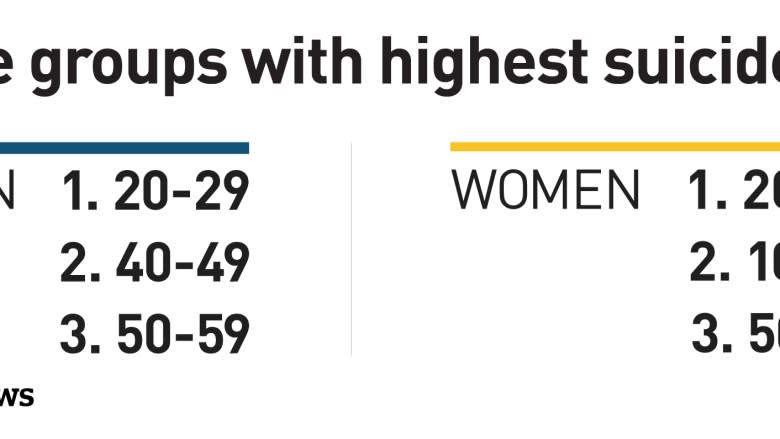Coroner's office starts releasing stats on suicide deaths in Saskatchewan
Nearly 1,900 people in Saskatchewan have lost their lives to suicide in the past 12 years, according to new figures published by the provincial coroner.
Posted to the corner's website, the statistics show how many suicide deaths its office has seen in the province from 2005 to 2017.
Statistics shows 1,895 people died because of suicide during that time, 1,421 of whom were men and 474 women. It shows over the years the number of suicide deaths has not decreased, but remained relatively static, with fluctuations from year to year.
For example, the report shows in 2005, 124 people took their own life as compared to 164 in 2017.
The coroner's office investigates all sudden, unnatural or unexpected deaths.
Important data, says doctor
A Ministry of Justice spokesperson said in an email to CBC News the coroner's service recently began posting these statistics because of the high volume of requests it receives from the public and agencies for this information.
Dr. Senthil Damodharan, interim lead in psychiatry for the Saskatchewan Health Authority in Regina, applauded the move, saying it's important such statistics are made available.
"These reports reflect actual rates in the community," he explained, saying those in mental health services only see a "small population" of suicides because of reporting limitations that restrict providers to only track such information from those seeking services from the region.
For Damodharan, the coroner's findings show there is a "a lot of unmet need" in the province.
Bridge gap with mental health services
"Hopefully over time coroner's rates will come down and mental health services rates will not increase but be able to capture more patients ."
He notes the higher rates of suicide among men can be explained by research that shows men tend to use lethal methods for self harm, so it would be more likely they will succeed.
Another common reason is as compared to women, men tend to be less likely to seek help when experiencing mental health problems.
"Even when men seek help they could down play their intentions and therefore the providers can minimize or consider them as low risk for suicide," which relates to concerns around masculinity and the stigma of seeking help.
He pointed out the coroner's statistics confirm existing concerns around the high rates of suicide among Indigenous people and young people.
Damodharan attributed both trends a myriad of factors like early life trauma — overrepresented in Indigenous communities — access to mental health services and the higher risk of developing substance abuse and mental illness among young adults.
Suicide 2nd leading cause of death among youth
"Early onset of addiction and substance abuse play a big role. If you think about it, the substance abuse and alcohol removes restraints in your brain or mind if you will when you're feeling hopeless or when you're encountering a stress or a trauma or a difficulty."
A CBC analysis of the corner's findings show the highest numbers of suicides for both men and women were in the age group of 20 to 29. The second highest age group of women who died by suicide were those between 10 to 19.
Damodharan said women and girls tend to self harm more so than men.
Statistics Canada has also reported that suicide remains the second leading cause of death for young people from ages 15 to 34 in Canada.
Going forward, he noted it would be helpful for the coroner's reporting to include geographic locations for suicide deaths, pointing to national statistics that show rates are higher in northern Saskatchewan as compared to the south.



